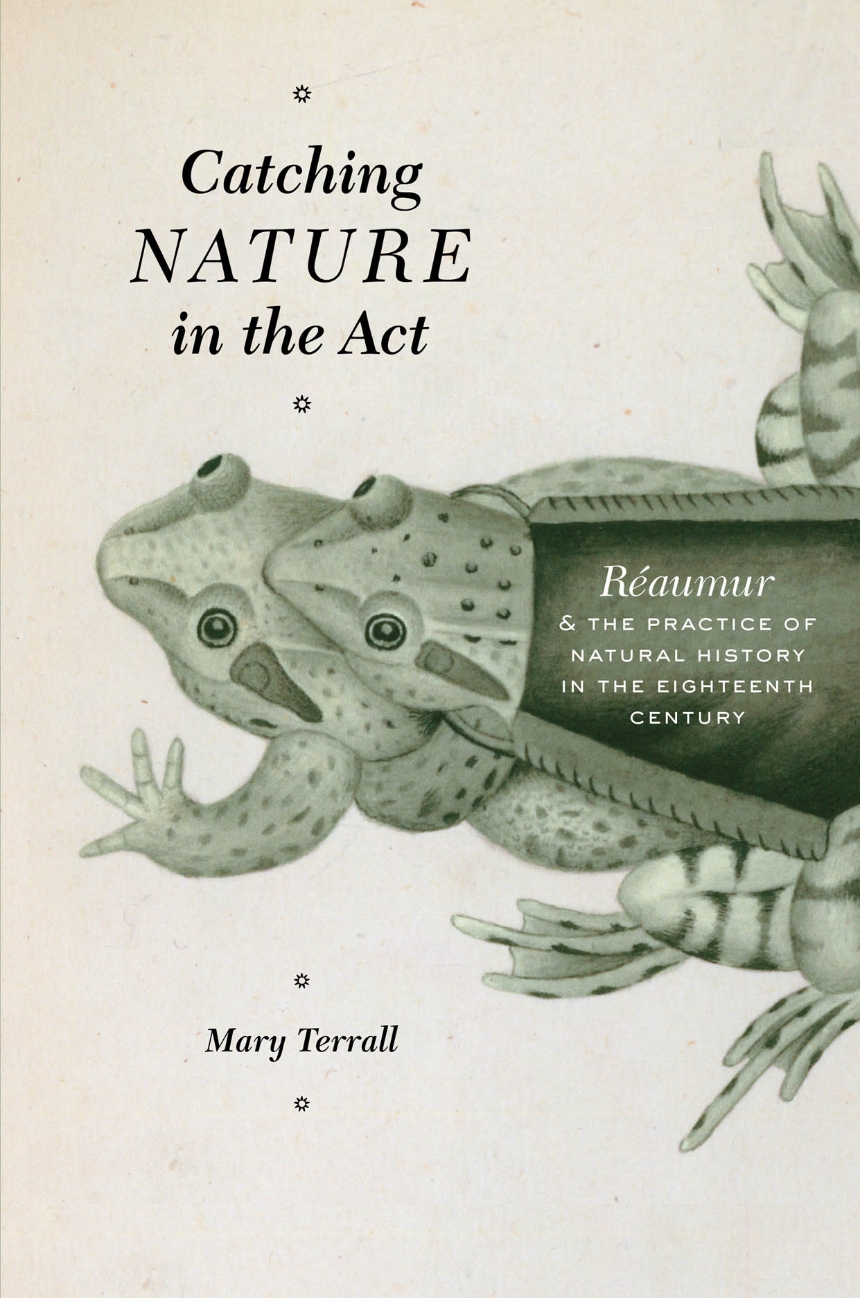Catching Nature in the Act
Réaumur and the Practice of Natural History in the Eighteenth Century
9780226088600
9780226088747
Catching Nature in the Act
Réaumur and the Practice of Natural History in the Eighteenth Century
Natural history in the eighteenth century was many things to many people—diversion, obsession, medically or economically useful knowledge, spectacle, evidence for God’s providence and wisdom, or even the foundation of all natural knowledge. Because natural history was pursued by such a variety of people around the globe, with practitioners sharing neither methods nor training, it has been characterized as a science of straightforward description, devoted to amassing observations as the raw material for classification and thus fundamentally distinct from experimental physical science. In Catching Nature in the Act, Mary Terrall revises this picture, revealing how eighteenth-century natural historians incorporated various experimental techniques and strategies into their practice.
At the center of Terrall’s study is René-Antoine Ferchault de Réaumur (1683–1757)—the definitive authority on natural history in the middle decades of the eighteenth century—and his many correspondents, assistants, and collaborators. Through a close examination of Réaumur’s publications, papers, and letters, Terrall reconstructs the working relationships among these naturalists and shows how observing, collecting, and experimenting fit into their daily lives. Essential reading for historians of science and early modern Europe, Catching Nature in the Act defines and excavates a dynamic field of francophone natural history that has been inadequately mined and understood to date.
At the center of Terrall’s study is René-Antoine Ferchault de Réaumur (1683–1757)—the definitive authority on natural history in the middle decades of the eighteenth century—and his many correspondents, assistants, and collaborators. Through a close examination of Réaumur’s publications, papers, and letters, Terrall reconstructs the working relationships among these naturalists and shows how observing, collecting, and experimenting fit into their daily lives. Essential reading for historians of science and early modern Europe, Catching Nature in the Act defines and excavates a dynamic field of francophone natural history that has been inadequately mined and understood to date.
264 pages | 46 halftones | 6 x 9 | © 2014
Biological Sciences: Natural History
History: European History
Physical Sciences: History and Philosophy of Physical Sciences
Reviews
Table of Contents
1. The Terrain of Natural History
2. "Catching Nature in the Act"
3. Seeing Again and Again: Illustration and Observation in Domestic Surroundings
4. Recruiting Observers and Training "Philosophical Eyes"
5. Natural Prodigies: Asexual Reproduction and Regeneration
6. A Spectacle Pleasing to the Mind: Natural History on Display
7. Chickens, Eggs, and the Perennial Question of the Generation of Animals
Epilogue
Acknowledgments
Notes
Bibliography
Index
2. "Catching Nature in the Act"
3. Seeing Again and Again: Illustration and Observation in Domestic Surroundings
4. Recruiting Observers and Training "Philosophical Eyes"
5. Natural Prodigies: Asexual Reproduction and Regeneration
6. A Spectacle Pleasing to the Mind: Natural History on Display
7. Chickens, Eggs, and the Perennial Question of the Generation of Animals
Epilogue
Acknowledgments
Notes
Bibliography
Index
Awards
Choice Magazine: CHOICE Outstanding Academic Title Awards
Won
Society for the History of Natural History: Thackray Medal
Won
